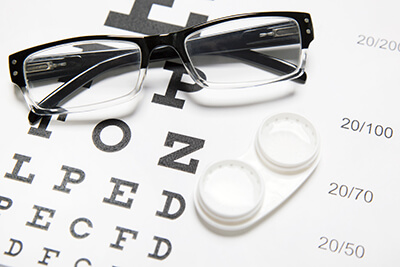 Many patients want to understand what the numbers signify on a prescription for glasses or contact lenses. Unlike an eye test, an optical prescription is not a direct measurement of the ability to see. It does not compare eyesight with that of someone who has perfect vision, the way an eye chart does. Instead, the prescription is a specification of the power required to correct vision to normal.
Many patients want to understand what the numbers signify on a prescription for glasses or contact lenses. Unlike an eye test, an optical prescription is not a direct measurement of the ability to see. It does not compare eyesight with that of someone who has perfect vision, the way an eye chart does. Instead, the prescription is a specification of the power required to correct vision to normal.
Refractive errors occur when light rays entering the eye cannot focus precisely on the middle of the retina. When this happens the retina is incapable of relaying a clear message to the brain and you can’t see clearly. Corrective lenses bend the light rays to focus more directly onto the retina. The amount of correction necessary is written as a prescription.
The first number indicates myopia or hyperopia:
Mild to moderate myopia = in the range of -1 to -6 diopters.
Mild to moderate hyperopia = within the range of +0.75 to +4.00 diopters.
A second number indicates both the presence of astigmatism and the degree of it. Astigmatism may have either a minus sign or a plus sign. Most everyone has some degree of astigmatism.
A third number, called axis, indicates the direction of astigmatism
An example might look like:
It would mean:
At Seibel Vision Surgery, your eyes and vision are of paramount importance. To help you make the most informed decisions regarding the welfare of your vision, we are delighted to be of service and are happy to answer any questions you may have.
Please take the time to familiarize yourself with the information contained on this site. We have compiled it especially for you!
Monday, Tuesday, Wednesday, and Thursday
8:30 a.m. to 3:30 p.m.
Friday
8:30 a.m. to 3:00 p.m.
OUR ADDRESS
11620 Wilshire Boulevard, Suite 711
Los Angeles, California 90025
PHONE
(310) 444-1134
FAX
(310) 444-1130
Learn about cataracts and their treatment
Learn more about CataractsGlaucoma, Macular Degeneration,
Medical Eye Exams, and other